Read Reviews
The Best Weed Membranes
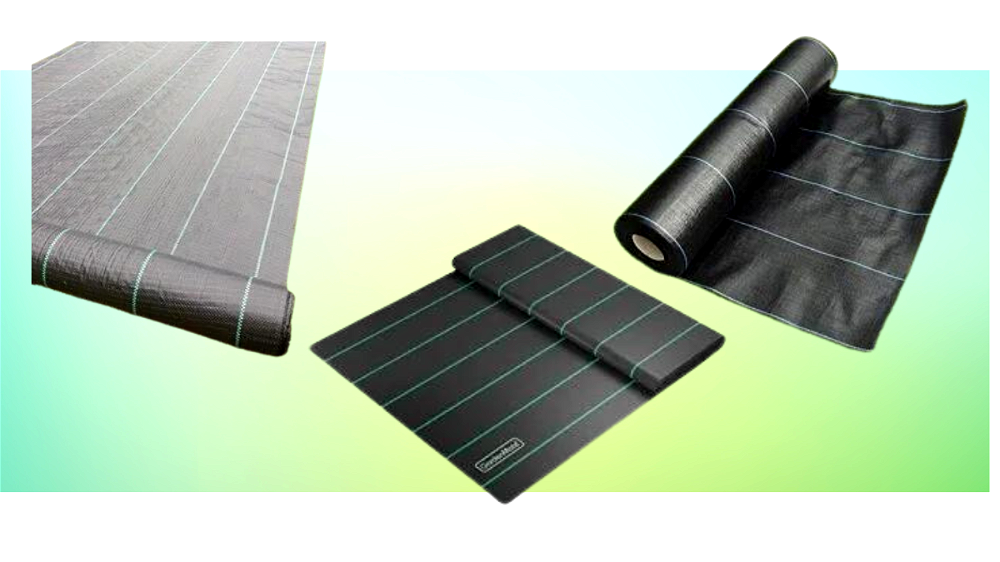
-
GardenMate Weed Control Fabric
-
Ansio Weed Control Membrane
-
GroundMaster Heavy Duty Weed Control Membrane
-
Lita Weed Barrier Control Fabric
-
Yuzet Heavy Duty Weed Control Fabric Membrane
Weed Membrane Reviews
- Allows rainwater to filter through into the soil and doesn't pool on top
- Effective against most regular weeds
- Very easy to unroll and lay, simply cut to size with sharp scissors
- Lightweight enough to work with easily
- Grid lines make it very easy to cut to the right size
- Cut edges fray easily and need to be folded over
- Some smaller weeds may permeate the fabric
If you’re creating a new raised bed, rockery or gravel pathway, the GardenMate Weed Control Fabric can help stop weeds from creeping up and ruining its appearance.
The geotextile fabric has a thickness of 100g/m² and is durable enough to last several years with limited sign of damage or thinning.
It’s stabilised against UV, so doesn’t become noticeably weakened by the sun’s rays, and is also thick enough to be covered by gravel, mulch, or sand without puncturing or wearing through. For reference, it’s about the same thickness as a tent’s ground sheet.
The 2 x 10 m sheet is suitable for covering areas up to 20 m², and there’s also a 2 x 5 m option and 2 x 15 m option available. If none of these sizes match up to the area you’re looking to protect, the fabric can easily be cut with a pair of sharp scissors. In this way, it can be tailored to the desired size and shape.
One downside of this fabric is that it can fray where it has been cut, so the best thing to do is allow for an extra 10 – 15 cm when cutting. This makes it possible to fold the fabric under at the edges, which will stop fraying edges from being visible.
Whilst stopping weeds growing through, it is still permeable to water. This allows plants that are protected by the membrane to benefit from rain water, and also means that water does not pool on the top of the fabric.
Overall, although the fraying is something to be aware of, this is one of the best weed membranes in terms of quality; it’s thick, long lasting and stops weeds growing through.
Did you find this review helpful?
- Large 50 m sheet can be used on areas like allotments without having to piece more than one together
- Good value for money considering how much membrane is received
- Laying the material is simple as it's heavy enough not to blow away whilst working with it
- Water permeable which prevents pooling
- Arrives folded instead of rolled which makes it harder to unpack and cut to size
- Woven edges fray after they have been cut so need to be folded over
A decent option for larger areas, the Ansio Weed Control Membrane is available in sheets up to 50 m long. This big size could be particularly useful in large open spaces, such as allotments, without having to piece more than one sheet together and risk letting weeds in.
It can be purchased as either a 1 m wide sheet, or a 2 m wide sheet, depending on the area you are trying to cover. Cutting the membrane is easily done, using either sharp scissors or a Stanley knife, so you can create the exact size required.
The fabric is UV stabilised and shouldn’t degrade when exposed to the sun’s rays for long periods. It’s suitable for many different uses such as landscaping, driveways, flowerbeds and patios and is straightforward to lay.
Due to its thickness, the Weed Control Membrane doesn’t move about too much or flap around during the laying process, making it easier to keep control of. However, the edges are prone to fraying.
In order to avoid finding small fraying strands of plastic around the garden, many customers opt to fold the edges under before securing them in place.
One of the main disadvantages of how easily this fabric frays is that it can be difficult to neatly cut holes in the middle of the membrane for plants to grow through. In these cases, it’s harder to fold under the edges.
The green lines on the membrane help with creating straight folds, as well as with cutting the fabric in a straight line. Although, there are only vertical lines so it’s not as useful for cutting across the width.
Thanks to its size, this is one of the best weed membranes for large areas; however, it is not quite as high quality as others on the market. Nevertheless, it is well priced for the amount of material that you get.
Did you find this review helpful?
- Very easy to manage - thin, flexible and lightweight
- Effective against most types of weeds
- Available in a huge range of lengths and sizes to suit your garden
- Can be used to protect pathways, driveways, decking and flowerbeds from weeds
- Much thinner than others on the market so may not last as long as heavy duty membranes
- Arrives folded instead of rolled which makes it harder to install and cut to size
- Drainage isn’t as good as other membranes and some users have noticed water pooling on the surface
Offering good value for money, this GroundMaster Heavy Duty Weed Control Membrane delivers a generous amount of fabric at a reasonable price.
Although it is not the cheapest membrane featured on this list, the 1 x 10 m sheet will be sufficient to cover the majority of garden flowerbeds, raised beds and gravel pathways. There are also plenty of other widths available, in case you need to cover a slightly larger space.
Made from woven polypropylene, this membrane is easy to lay and cut. It can be trimmed to size using sharp scissors, and adjusted to fit any area, even if it is awkwardly shaped.
Like most woven weed membranes, it is prone to fraying, so when cutting the fabric you’ll need to leave a little extra. This extra fabric can be folded under the edges to limit how much it frays.
Its woven construction means that it’s permeable to water and rainwater will therefore not pool on top of the fabric. Soil under the fabric will be able to benefit from the rain as well.
The membrane is effective at keeping out weeds and also sufficiently durable not to tear when put under a little pressure. For example, when pegs are inserted or when heavy items, like flowerpots, are moved across its surface.
Weighing up its quality and price, as well as how much fabric you get, this seems to be one of the best weed membranes to buy in terms of value for money.
Did you find this review helpful?
- Most heavyweight weed membrane featured here at 125 g/m²
- Won't rip when secured by pegs
- Can be cut to size with sharp household scissors
- Heavy duty fabric isn't damaged by gravel/sand/bark
- Arrives folded instead of rolled which makes it a little harder to spread out and cut
- Frays at the cut edges so you’ll need to use very sharp scissors and fold the edges over
Weighing 125 g/m², the Lita Weed Barrier Control Fabric is the thickest and heaviest weed membrane featured on this list.
Thanks to its density, it’s easy to lay and spread without the sheet acting up and blowing around, plus it can be covered with various material such as sand, gravel and bark without damaging the surface of the fabric.
It efficiently keeps weeds from growing where it has been placed, and is easy to cut. The 1 x 10 m sheet can be reduced in size if necessary, using sharp scissors, or holes can be cut in the centre of the sheet to allow plants to grow through.
The fabric can be held down with pegs, which need to be purchased separately, and doesn’t rip in the areas where it is secured.
Overall, this is one of the best weed membranes if you’re looking for something thick and heavy duty. Customers report that it is noticeably thicker than some of the other products on the market, which should help with keeping weeds at bay and the garden tidy.
It comes folded, instead of on a roll, which means it can’t just be pushed out to distribute it in the garden; however, as mentioned it’s not too unruly to control when the sheet is entirely opened out.
Even though the sheet is made from heavy-duty polypropylene, it still allows water and air through to the soil. Not only does this avoid water pooling on the fabric’s surface, it also means that the soil benefits from natural ventilation and rainwater.
Did you find this review helpful?
- Weave design allows water to penetrate through into the soil and prevents pooling
- Generally effective against weeds and can be double layered in areas that are particularly susceptible to weeds
- Planting lines make it easier to plant in straight lines for a neater looking garden
- Lightweight material is manageable to make laying the fabric easier
- Arrives folded rather than rolled which means it can have creases
- Frays after cutting and needs to be folded under at the edges
Measuring 2 x 10 m, the Yuzet Heavy Duty Weed Control Fabric is a UV-stabilised membrane made from polypropylene.
It’s relatively thick, with a weight of 100g/m², and will stop the majority of weeds growing through. The amount supplied will cover an area of 20 m², and if you have several smaller areas you can cut this membrane to size accordingly.
Sharp scissors will need to be used for the cutting, as the edges do fray quite a lot. This is common with a lot of woven weed membranes, and the situation can be improved by folding the edges of the fabric under before securing them down.
The Yuzet Weed Control Fabric can be used as an underlayer for artificial grass, or as a protective layer in vegetable patches, flowerbeds and driveways. It will also help keep an area temporarily free of weeds if you’re not decided what your plans are for the space yet.
To maintain the health of the soil beneath, the fabric is permeable. Water and nutrients can reach through, even though weeds won’t be able to grow. Therefore, it won’t ruin the ground beneath whilst the fabric is in place.
One of the only downsides of this membrane is that it arrives as a folded sheet, not on a roll that can be easily unfurled in the garden. The sheet needs to be unfolded first before it can be cut to size or laid out.
Did you find this review helpful?
How to Choose The Best Weed Membrane
The Benefits of Using Weed Membrane
There are several benefits to using weed membrane in the garden:
- If weed membrane is used effectively, you won’t have to use another type of weed killer in the garden.
This means you can avoid using harmful chemical weed killers. In general, using chemical herbicides should be avoided as much as possible; whilst they can effectively kill weeds, they can also cause damage to other plants, allow chemicals near your food crops, and harm wildlife.
- Weed membranes can help with drainage problems.
A permeable weed membrane (one that allows water through) can help drain excess water. It can also be used cleverly to control and direct water in the garden.
- Weed membrane improves the lifespan of paving.
When used under paving slabs, it can stop moisture from damaging the paving. Water-damaged paving slabs often results in cracks.
- Weed membrane fabric is very durable.
If you keep it out of direct sunlight you likely won’t have to change it for many years. As a result, it can be a very cost-effective solution for a weed free garden.
READ NEXT: The UK’s Best Fast-Acting Weed Killers
Woven vs Non-Woven Weed Membrane
There are two different types of weed membrane available. Woven weed membranes are made up of lots of strands of polypropylene plastic that have been weaved together. Non-woven weed membranes are made from bonded polypropylene.
Woven Weed Membrane
The main advantage of woven membrane is that is tend to be stronger and more durable than the non-woven variety. Due to the weave, there is some flexibility and movement in the fabric so it is less likely to tear or puncture when put under pressure. Woven weed membrane is best used in areas where there will be heavy footfall, like on gravel driveways, as well as in areas where aggregates (sand, mulch, gravel etc.) will be placed on top of the membrane.
Woven membranes tend to be permeable, and let water in to reach the soil; however, sometimes the weave is so tight that water doesn’t move through very quickly.
One of the biggest disadvantages of woven membranes is how easily they fray. Although most sheets will have bonded edges on arrival, when you cut them to size the raw edges will fray. This can leave a lot of stringy plastic in the garden if you’re not careful.
The best thing to do when cutting woven membrane is to allow for a border of 10 cm extra fabric on all sides. This can then be tucked under and pegged, to avoid exposed, fraying edges. If you have to cut a hole in the middle of the fabric for plants, it can be more difficult to hide the raw edges.
Non-Woven Weed Membrane
Bonded weed membrane feels like thin felt. It is extremely flexible and pliable, and easier to position in areas with many corners and sides compared to woven membrane. This makes it useful for landscaping applications. Due to its bonded construction, non-woven membrane may tear or break if it is subjected to a lot of friction. For this reason, it is best used in areas that don’t experience a lot of footfall.
One of the main advantages of non-woven membrane is that it doesn’t fray when it’s cut, so exposed edges won’t disintegrate over time. It’s also permeable, often more so than woven weed membrane, and will let moisture reach the soil below.
The main disadvantage of non-woven weed membrane is that it doesn’t tend to last as long as woven membrane.
READ NEXT: The Best Weeding Tools
How to Lay Weed Membrane
The following steps will help you lay the weed control fabric correctly, to most effectively combat against weeds.
- Clear the area – once you’ve chosen the area you wish to cover, make sure it is completely clear. There should be no small plants, weeds, twigs or stones which could pierce the membrane. If you are covering a patch where there have been a lot of weeds, you may want to spray weed killer (just this one time!) before using the membrane.
- Cut the membrane to size – if using woven membrane, allow for an extra 10 cm on all sides than can be tucked under to prevent excessive fraying.
- Overlap the membrane – when laying several sheets of membrane, make sure to overlap them at the joins by 10 cm. Weeds might otherwise find their way in.
- Cut holes in the membrane for plants – if you are laying the weed control fabric around plants, you may need to cut holes in it to let them poke through. Bear in mind, the more holes you cut in the membrane, the more chance you are giving weeds to come through. Making as few as possible, as small as possible, is the best way.
- Secure the membrane – pin the membrane down with stakes or pins. You need to use these to make sure the membrane is as flat and flush to the ground as possible.
- Cover the membrane – ideally you should cover the membrane with gravel, wood chippings, decorative mulch or rocks. Not only will this weigh down the membrane but it will also stop the sun’s UV rays from degrading the fabric (although many weed membranes have UV-resistant properties).
READ NEXT: UK Weed Identification Guide
Different Uses for Weed Membrane
There are different types of weed membrane depending on what you are looking to achieve. Here are the different types, depending on what you want to use it for:
Weed Control
These ‘weed control’ fabrics stop weeds coming up through the soil. They are permeable, so allow water and air to pass through, but will block sunlight and won’t allow weeds to grow. By covering the surface of the ground, they also stop weed seeds from being able to settle in the soil.
Root Control
Weed control membranes can also be used vertically to keep roots of plants at bay; to stop them spreading out of a certain area. This can be achieved by using a non-permeable membrane as a barrier.
Erosion Control
If you have a sloped garden, you may want to use a membrane which is suitable for a sloping incline. These membranes control weeds and soil erosion. They’ll keep the earth from sliding by essentially securing it in place.
READ NEXT: The Best Weed Burners
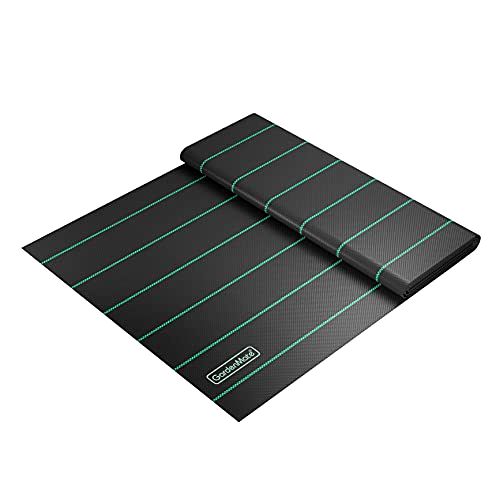
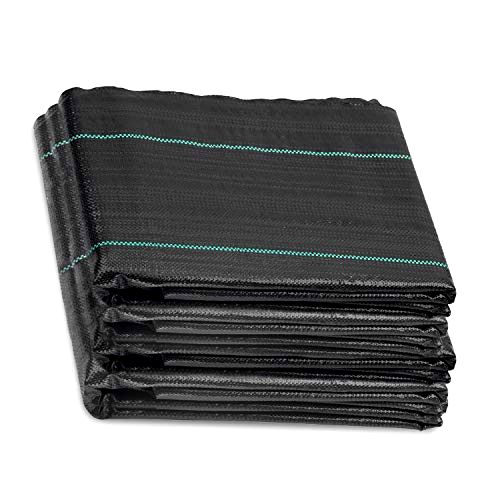
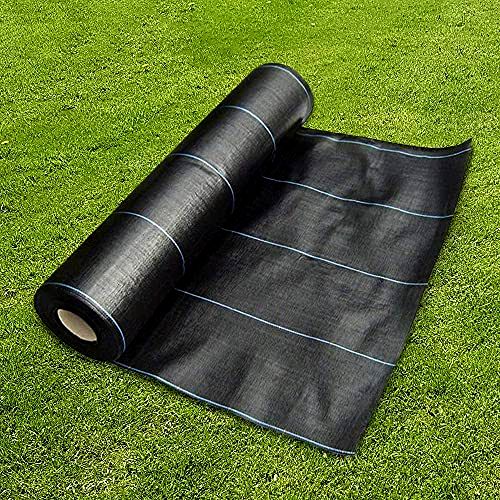

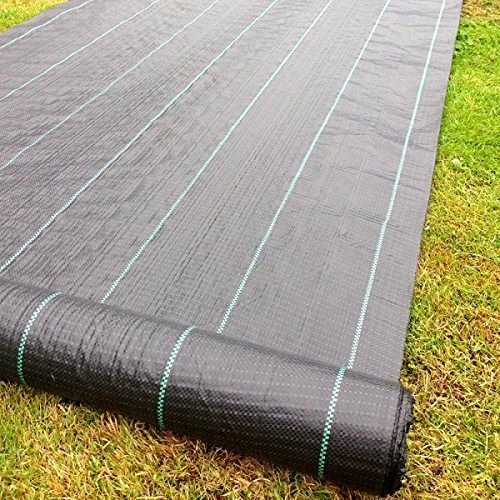

Share